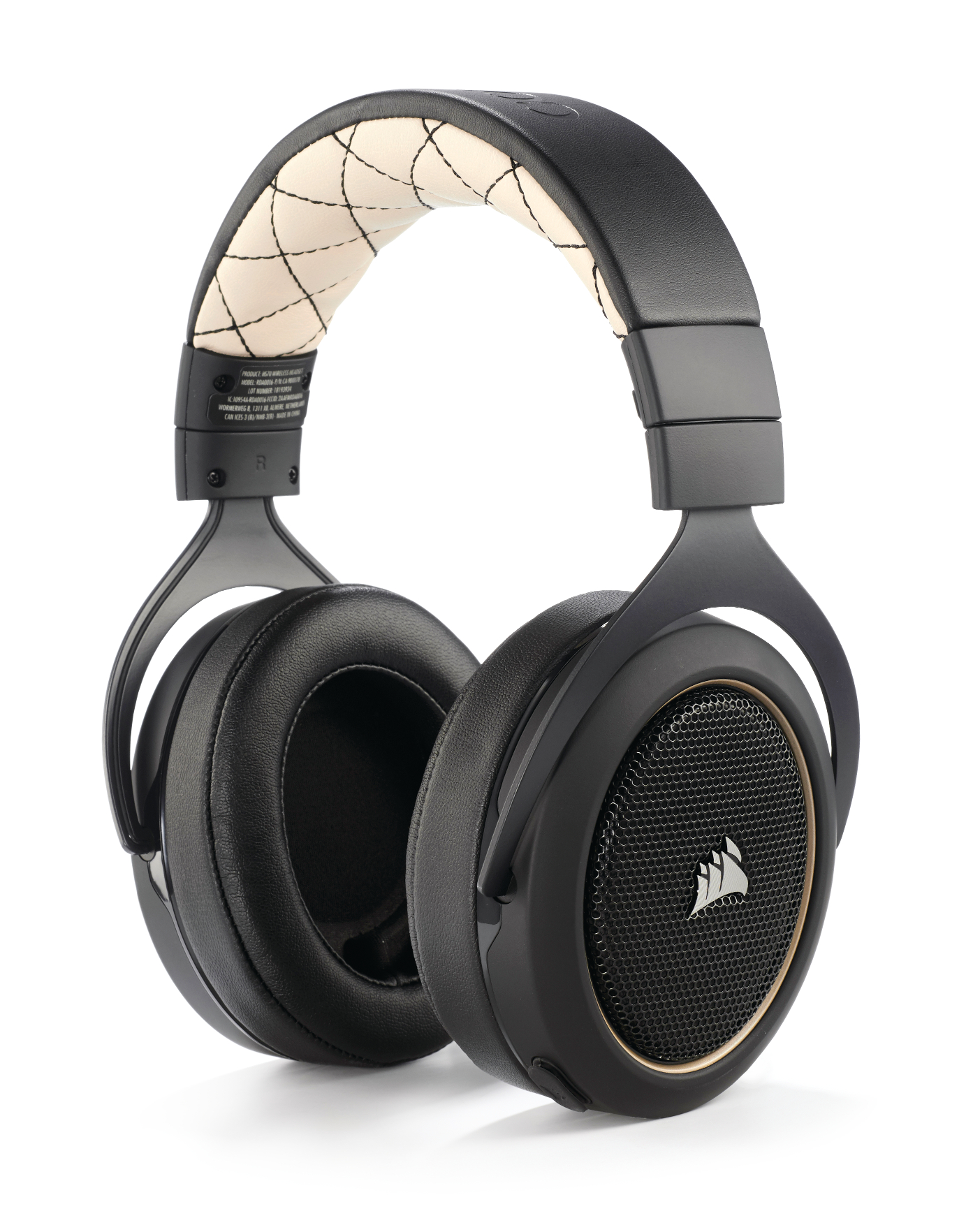Our Verdict
Ultimately, for the price, these cans are classy as hell, sound incredible, and are comfortable to boot. It’s hard not to love them.
For
- Awesome price
- Aesthetically pleasing
- Good mic
Against
- The 7.1 virtual surround sound sucks
PC Gamer's got your back
we’ve got a simple test for headphones: Crank up the volume, listen to your favorite track, and see whether those cans make your hair stand on end. If that tingling sensation shoots across your shoulders and along your arms, if that track evokes an emotional response, we know we’re on to a winner.
Joke's aside, let’s start with a little preface: We’re quite the connoisseurs of wireless headsets here at the mag. After all, when you spend your days using multiple machines at any given time, being wirefree makes your working life far more comfortable. Sure, they have their drawbacks—finite battery life is certainly the biggy, and sound quality over the wireless medium almost always suffers—but in contrast to the alternative, the improvement to your quality of life is just too tempting to pass up, even against some of the silly pairs of headphones we have in the office.
Price: $100
Driver Type: 50mm neodymium dynamic
Impedance: 32 ohms
Frequency Response: 20Hz–20kHz
Microphone Type: Unidirectional noise-canceling
Connectivity: USB
Range: 40 feet
Battery Life: 16 hours
Air style
This is a set of Corsair’s newest HS70 SE Wireless headphones, and we’ll be straight-up with you: They’re incredible. Even better than the normal HS70, our budget pick for the best wireless gaming headset. We’ll even go so far as to say the best Corsair headset we’ve ever tested.
Aesthetically, they’re a breath of fresh air. There’s no RGB here, the minimal amount of plastic is soft to the touch, the leather memory foam headband is embroidered in an array of different colors, and the overall feel is sturdy. These can take a hit, that’s for sure. There’s the usual height adjustment on them, but that’s it.
It’s the audio, though, that carries these beauties: 50mm neodymium dynamic drivers drive both earcups, and although they only come packing a 20Hz–20kHz frequency response, they’re some of the most well-balanced coils we’ve ever seen from the gaming market. Equal even to HyperX’s now legendary Cloud series. Everything is crisp, everything is clear, they’re not too bass heavy, there’s very little distortion, and the mids don’t fall flat—it’s all very nice.
Jump into Corsair’s CUE software to access the EQ presets, and you’re graced with a grand total of five separate profiles, all of which make quite a dramatic difference to the overall feel of the audio. But, again, nothing here is too harsh, and nothing leads to any distortion. The Bass Boost is our preferred EQ setting, because it pumps up that low end whilst also raising the treble just enough—you end up gaining clarity in the top end whilst securing that fat feel on the bottom. Simply glorious.
So, then, drawbacks? Well, apart from the lack of rotational movement, and no RGB for the, er, enthusiasts, you’re still limited to a 16-hour battery life before you need to recharge, and there’s no dock or the like.
On top of that, the 7.1 virtual surround sound still kind of sucks, even in films and games. It’s just too synthetic, and you can tell—but, then, that is an optional extra; you don’t have to enable it. Ultimately, for the price, these cans are classy as hell, sound incredible, and are comfortable to boot. It’s hard not to love them.
This article was originally published in Maximum PC's August issue. For more quality articles about all things PC hardware, you can subscribe to Maximum PC now.
Ultimately, for the price, these cans are classy as hell, sound incredible, and are comfortable to boot. It’s hard not to love them.
After graduating from the University of Derby in 2014, Zak joined the PC Format and Maximum PC team as its resident staff writer. Specializing in PC building, and all forms of hardware and componentry, he soon worked his way up to editor-in-chief, leading the publication through the covid dark times. Since then, he’s dabbled in PR, working for Corsair for a while as its UK PR specialist, before returning to the fold as a tech journalist once again.
He now operates as a freelance tech editor, writing for all manner of publications, including PC Gamer, Maximum PC, Techradar, Gamesradar, PCGamesN, and Trusted Reviews as well. If there’s something happening in the tech industry it’s highly likely Zak has a strong opinion on it.



